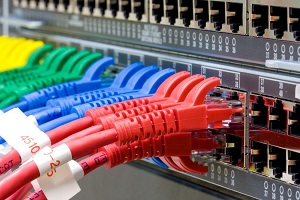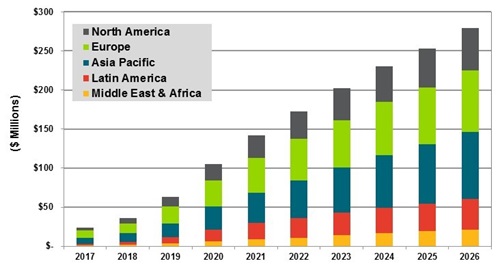- LTE-Cat-M1
- Low Power Wide Area
- Utility Transformations
- Utility Transformations
First (Nearly) Nationwide LPWA Network Now Available for Utility Applications

On March 31, Verizon launched the first commercial LTE-Cat-M1 network across 2.4 million square miles in the United States. LTE-Cat-M1 is a cellular-based, low power wide area (LPWA) network designed to support the burgeoning Internet of Things (IoT) industry. Other LPWA solutions include ultra-narrowband systems such as SIGFOX, RPMA technology from Ingenu/Trilliant, the LoRA standard, and others.
Verizon said that the service will run at $2 per month per device (or less for large-scale deployments)—less than existing 2G or 3G cellular services that may be in use today by electric utilities. Chipsets and modules are available from Sequans, Telit, Qualcomm Technologies, Encore Networks, Link Labs, and NimbeLink. Modules from Qualcomm are also available with Verizon’s ThingSpace IoT cloud platform integrated.
In addition to low cost, LPWA solutions such as LTE-Cat-M1 are also known for very long battery life (10-20 years), as well as improved in-building/underground penetration. Click here to see an infographic highlighting the features of Verizon’s LTE-Cat-M1 offering. Rival AT&T has been trialing LTE-Cat-M1 in San Francisco since last fall and said in January that it would deploy to “most” of its network by mid-year and nationwide by year-end.
The LTE-Cat-M1 standard, along with the yet to be launched narrowband IoT (NB-IoT) and the GSM-based Extended Coverage-GSM-IoT (EC-GSM-IoT) standards, will be deployed via a software upgrade to existing LTE or GSM cellular networks. LTE-Cat-M1 is expected to be popular across North America, while many European cellular operators are more focused on the NB-IoT standard, which is expected to launch in 2018 along with EC-GSM-IoT.
IoT Comes of Age – for Utilities Too?
For power utilities, LPWA technologies promise to make widespread sensor networks an economic reality throughout the distribution grid. With costs as low as a dollar or two per year for some standards (SIGFOX and LoRA), depending upon data volume, utilities may finally be able to make a sound ROI argument for ubiquitous sensors.
As described in Guidehouse Insights’ report, Low Power Wide Area Networks for Power Utility Applications, the LTE-Cat-M1 service may be appropriate for utility applications such as smart metering, distribution line monitoring and control, fault location, isolation, and restoration (FLISR), Volt/VAR optimization, smart solar inverter connectivity, and wide-scale asset management and monitoring functions.
Guidehouse Insights expects the market for LPWA services and equipment among power utilities to grow by more than an order of magnitude over the next decade, from $23.4 million this year to nearly $280 million in 2026. The market is projected to be valued at more than $1.5 billion over this timeframe.
Total Utility LPWA Revenue by Region, World Markets: 2017-2026

(Source: Guidehouse Insights)